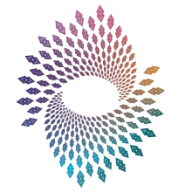How To Build High-Performing Teams Through Coaching
- POSTED ON APRIL 20, 2022

Every company wants to build highly effective teams. Great teams are part of any organization’s success. But building high-performing teams is not a walk in the park. It requires developing trust among team members, establishing effective collaboration, and ensuring everyone’s overall wellness. One of the best ways to achieve this holistic version of team success? Coaching.
Coaching is backed by science: it helps make team members’ thought processes and behaviors work towards an organization’s broader vision. Compared with basic training, which simply focuses on certain job-related abilities, the interactions enabled through coaching help people to feel acknowledged and assist with personal improvement.
Many businesses already understand the value of coaching in leading and developing teams. In fact, 86% of organizations that use internal or external coaches report a return on investment from coaching, and 96% say they would repeat the process. This is because coaching addresses individuals on a more intimate level, making them more effective in interacting with other people and designing alliances.
The Co-Active Training Institute (CTI) has trained tens of thousands of leaders to be agile, collaborative, and relationship-focused — able to connect with, engage and empower employees. Today, over half of the Fortune 500 companies have already used Co-Active training programs in developing highly effective teams. Leaning on this expertise, let’s dive deeper into how coaching helps businesses in building high-performing teams.
Coaching Cultivates Trust and Open Communication
Leaders are the first point of contact between employees and the organization. Therefore, they can be one of the primary reasons why some employees stay and others quit. They also have the ability to either develop or blemish the trust of employees. That is why communication is key when stewarding organizations.
CTI is a firm believer in the value of leader-coach partnerships, which help people make connections and figure out how to relate to others in the best way possible. In this form of organizational relationship, leaders are expected to make employees feel at ease in expressing themselves. To achieve this, leaders also understand the importance of listening. CTI promotes three levels of listening because communication and connection is impossible without the ability to listen actively.
Conducting coaching sessions helps build a strong rapport between leaders and team members, in turn assisting with the leaders’ goal of earning employees’ trust.
Coaching Encourages Team Collaboration
In the process of building high-performing teams, leaders should understand that true team collaboration is a decision that people make, not something that can be imposed in a top-down way. In addition, creating and maintaining the appropriate conditions for team collaboration involves a variety of cultural, structural, and interpersonal elements.
A coaching culture promotes collaboration: it places a premium on training, regular feedback, opportunity for advancement, and the belief that anyone can be a leader. So, fostering a coaching culture allows team members to be open and honest with one another. This brings a clear sense of purpose and vision, as well as the ability to process disagreements openly and in a timely way and to hold each other accountable.
Collaboration also allows people to build on one another’s ideas in ways that encourage innovation and creativity, as well as drive intelligence-based decision-making as a group. The result: teams achieve results, while also growing professionally and personally.
Coaching can help bring these elements together because its process involves addressing a person’s needs on all levels. The Co-Active model can transform and activate personnel who discover it through coaching programs.
Coaching Boost Employee Well-being
According to a research by the Institute of Employment Studies, coaching increases overall well-being scores by improving employees’ abilities to be relaxed and helpful and to think clearly. The research also found that workplace coaching helped refine employees’ ability to deal with problems efficiently, cope with the unexpected, and feel more connected to their coworkers and managers.
To make this happen, leaders who are building high-performing teams must not limit themselves to coaching employees on work-related approaches; they must also provide another layer of support for the whole person, even outside the office. Coaching can promote employees’ overall well-being, on top of enhancing work-related functions.
Coaching Builds Resilience
Leaders who are building high-performance teams also support employees. Because high performance encompasses more than stress management; it also includes the ability to learn from challenges, bounce back, and obtain new skills in response.
When leaders attempt to improve employees’ resilience through coaching, introspection is essential — for the leaders and their team members. By becoming more self-aware, leaders and team members also learn to better understand each other’s thoughts and feelings. In turn, they become more motivated to keep learning and developing new abilities and to stay strong in the face of change. For employees, this specifically means having the ability to evade overpowering and destructive feelings stemming from the challenges they face. This ability could include preventing burnout by actively engaging in self-care and nurturing themselves following a stressful situation.
Coaching High-Performance Teams With Co-Active
CTI understands the importance of coaching in an organization and has been a staunch advocate of leadership and development. For CTI, the secret sauce for building high-performing teams is developing relationships and alliances through coaching.
For more than 30 years, CTI has been working with people around the world, helping them in building high-performing teams by navigating toward stronger relationships, integral solutions, and meaningful impact in the world.
High-performance teams — groups that are laser-focused on their objectives and consistently delivering business results — are the desire of all organizational leaders. More than a million people have benefited from the whole-person development that CTI offers. Adobe, Adidas, Barclays, and Honda are just a few of the global companies that have already reaped the benefits of collaboration and relationship-focused Co-Active training.
With the Co-Active model at the forefront of your coaching programs, you can be confident that your people’s needs are being met on all levels, allowing them to be the best version of themselves, while also contributing to team development.





